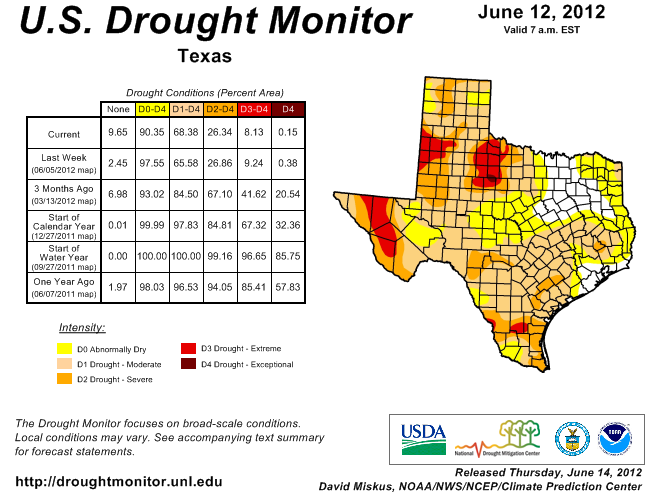 With Texas emerging from its record drought, it’s a good time to size up how the state’s water systems have responded.
With Texas emerging from its record drought, it’s a good time to size up how the state’s water systems have responded.
The Texas Commission on Environmental Quality reports that just two small community water systems, Spicewood Beach and Florence – a total population of less than 3,000 people – are in danger of running out of water now. This supports the argument I’ve been making – that Texas communities have made the necessary adjustments during the drought of record.
Kate Galbraith at the Texas Tribune has taken a much more detailed look at the issue, and her excellent stories provide substantial support for my argument. In case after case, Texas communities have shown the ability to manage their water supplies far better: Consider:
- a willingness to increase water rates
- desal (I was amazed to learn that Texas already has 44 operating inland brackish water desal plants)
- expansion of recycling
The final story in Galbraith’s series – On Water Conservation, Texas Has Room to Improve – suggests a bit of a mixed bag, showing the resistance some conservation efforts have met. But given the rest of her findings, I think I’d argue the Texas experience shows that, when communities are really up against it, they’ve demonstrated the ability to do a far better job at managing scarce water. As I’ve said before, it would be nice if we had the foresight to manage our water well before the shit hits the fan. But maybe that’s unrealistic. Maybe the best we can hope for is effective water management once the crisis is upon us.

Pingback: Texas handled their drought well
Pingback: Edwards Aquifer and the hole in my argument : jfleck at inkstain